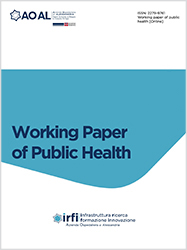How has queer theory influenced the ways we think about gender?

Accepted: 26 October 2016
All claims expressed in this article are solely those of the authors and do not necessarily represent those of their affiliated organizations, or those of the publisher, the editors and the reviewers. Any product that may be evaluated in this article or claim that may be made by its manufacturer is not guaranteed or endorsed by the publisher.
In this paper I am going to explore the contributions and complications produced by the development of queer theory, with reference to our understanding of gender. Firstly, I will give a brief introduction of the concept of queer and its evolution into an authentic theory of queerness. Then, I am going to concentrate on the encounter between queer theory and traditional feminism, highlighting the theoretical differences that result from this confrontation. After that, I will analyse the peculiarity of queer theory and its attempt to give an alternative notion of gender and to defeat the dichotomy between hetero/homosexuality by introducing a wider spectrum of possible sexual identities, mentioning also the importance that Judith Butler’s work Gender Trouble (1990) had in this process. Finally, I will give a practical example of the application of queerness by referring to the experiences of Brazilian transgendered prostitutes, symbol of ‘deviation’ from normative gender expectations. The aim of my analysis is to demonstrate the way in which queer theory not only influenced, but also gave the possibility to change and rethink how we approach the concept of gender, by introducing a wide range of implications that had been excluded by the previous gender discourse.
PAGEPress has chosen to apply the Creative Commons Attribution NonCommercial 4.0 International License (CC BY-NC 4.0) to all manuscripts to be published.

 https://doi.org/10.4081/wpph.2016.6948
https://doi.org/10.4081/wpph.2016.6948




